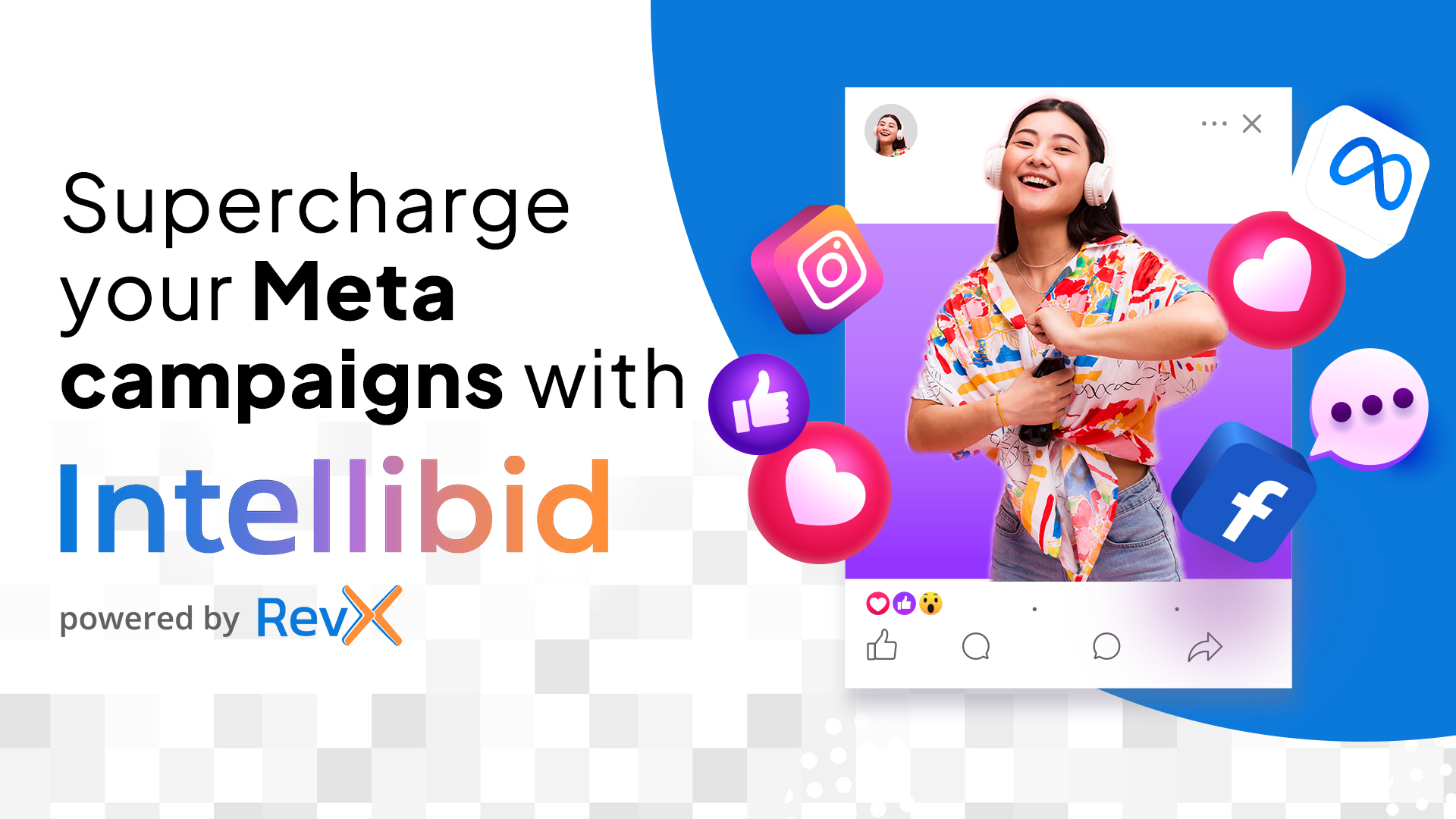In the game of mobile growth, it all starts with user acquisition. Users are the boon of every app’s existence, and to scale them fast and consistently, a paid strategy is in order.
Although advertisers will have multiple user acquisition channels at their disposal to explore, not all the channels and strategies will bear the same results.
With so many privacy changes happening in the advertising ecosystem, app marketers must clearly understand the landscape to adapt their strategies. Here we explore how user acquisition with programmatic advertising can work for your app even on a LAT scenario and its advantages versus other options like ad and affiliate networks.
Programmatic UA (User Acquisition) to support your mobile growth
Programmatic user acquisition is excellent to support your organic user growth. Suppose you find your organic UA waning over time. In that case, a programmatic campaign strategy can reinvigorate your ability to attract a larger pool of users to install your app and keep your growth momentum.
RevX was built as a full-funnel platform with user acquisition in mind from the start. Our platform is built to cater to your programmatic needs through the entire funnel: from finding and acquiring new users to onboarding them, re-engagement, and converting them to loyal customers for your app.
The accumulated experience in running end-to-end campaigns that drive results makes us a solid platform that can support you in attracting and keeping app users.
How do we go about attracting high-quality users across audiences and categories?
🔹 We work with you to identify your goals and work based on your priorities.
🔹 RevX ML-powered platform drives maximum quality control and transparency the entire way.
🔹 We use advanced algorithms that don’t need to rely only on user IDs and analyze over 500bn data points per day for a more reliable prediction of users’ intent and the likelihood of clicking, installing, and engaging.
🔹 We run advanced DS models to target LAT inventory efficiently to drive maximum performance on acquisition.
🔹 We’re SKAN integrated and LAT traffic ready. We use an innovative supply-lookalike approach that allows extrapolation of non-LAT audience performance to LAT audiences.
UA (User Acquisition) for LAT traffic
A significant change like the one posed by iOS14.5 always brings the need and opportunity to reevaluate your current advertising strategy. But these changes are not so disruptive that they will force advertisers to pause and shift their UA budgets somewhere else or even move the bulk of their spending from LAT audiences to audiences where identifiers are still available. That would be a rushed decision with no long-term benefits with regards to your iOS audience marketing ROI.
Planning to re-allocate your mobile UA budget? Don’t make rushed decisions.
ATT framework fundamentally changes how UA campaigns (and all campaigns on LAT audiences, for that matter) are run, optimized, and measured. Given that UA on LAT traffic is still very much possible to be run at scale, advertisers should focus on implementing ATT if they do not want to forgo last-click attribution measurement. They can rely on their programmatic partners to use high-quality inventories, make the most of lower eCPMs, and focus on a more brand-oriented approach with their campaign goals.
One crucial step in this process is for app marketers to actually rethink their main goals and KPIs for their user acquisition campaigns. With a well-thought strategy, incremental performance and scale are still very much achievable – efficiently – if you account for the big picture.
Since app marketers are now missing precise user targeting, they will also have to adapt to a different type of reporting.
User acquisition campaigns on LAT traffic will rely more heavily on contextual data to provide enough data points to discover and target potential new users for your app.
fThis means app marketers don’t need to rely solely on users’ IDs and can continue to experiment with different bidding strategies based on inventory attributes that allow for some level of granular optimization.
Choosing the right channels for mobile user acquisition
As an advertiser, you might ask, why programmatic when there are so many channels I could invest in?
For both LAT or non-LAT audiences, app marketers will always be on the lookout for diversity, scale, and reliable partners to support them in their user acquisition efforts. If apps wish to drive aggressive growth, deploying multiple channels sounds appealing, but using them all equally might not reward you with the combined results you expect.
Some of the top channels preferred for UA are programmatic, affiliate/ad networks, social networks such as Facebook, Twitter, TikTok, Snapchat, and UAC on Google Ads.
A holistic approach needs to be considered in order to decide whether the chosen channels are worth their investment, whether they are plagued with fraud and whether they can truly bring you incremental performance and revenue.
Why programmatic DSP for UA vs. ad networks?
A programmatic DSP (demand-side platform) like RevX allows advertisers to automatically manage and optimize their media buying at scale through one platform through real-time bidding.
RTB (real-time bidding) is more accurate and efficient than semi-transparent performance data delivered with delay, and it ensures that advertisers only pay for real results. All in all, programmatic gives advertisers flexibility, scalability, and transparency at a very competitive cost.
Ad and affiliate networks also tap into large and diverse publishers for advertisers looking for scale, but they do it very differently compared with programmatic DSPs. They sell ad inventory across a wide range of publishers through a mostly intransparent waterfall, which unfortunately results in problems such as invalid traffic. To steer campaign performance correctly, solid data feedback is thus key and can only be delivered on the basis of transparency and low to no fraud.
The limitations of using ad networks for your UA campaigns
The lack of automation in ad networks compared to a programmatic DSP presents some important limitations to consider before choosing which one to invest in.
First, when it comes to transparency, ad networks don’t offer much visibility into where each impression is being served. Their inventory is aggregated across different publishers, reporting is often masked and there’s limited impression tracking. The opposite happens with programmatic DSPs, where advertisers have access to clear reporting and can verify where and when each impression is being served to ensure their budgets are optimized to deliver maximum results at the best cost possible.
This transparency issue makes campaigns on ad networks more exposed to ad fraud through fraudulent clicks and app installs that can be obfuscated behind the lack of visibility on the multitude of publishers and sub-publishers being used.
Experienced advertisers who work with ad networks recognize the danger and are on the lookout for different types of ad fraud happening due to click-spamming, click injection, SDK spoofing (to add fake events). If ad networks are on your media mix, know that there are anti-fraud tools that can help minimize this and catch such fraudulent activity to prevent wasting your ad budgets on campaigns with no real benefits. Be on the lookout for tools such as mFilterIT, TrafficGuard, Scalarr, among many others.
The introduction of SKAN (SKAdNetwork) comes with the advantage of curbing some of these fraud issues across channels, but there’s a caveat. Ad fraud will change but won’t disappear on LAT traffic. As traffic loses user identifier data, the mechanisms that were used to protect and blacklist fraudulent activities need to be adapted. The anti-fraud mechanisms will have to rely more on the supply information that we still have available to identify which impressions are authentic and which are not.
In terms of pricing with ad networks, advertisers need to work with a predefined fixed price irrespective of the value each impression will bring. There’s no guarantee that the price paid will offer incremental results and scale.
Fine-tune your UA strategy with programmatic advertising
Cracking your strategy for LAT audiences starts by using reliable channels that can bring you real, verifiable scale, with minimal fraud exposure, at an optimized cost.
With the support of a programmatic partner, you have the rights tools at hand to enable you to create a solid advertising strategy and control your campaigns’ delivery and budget spending with the assurance that you’re getting the most value out of your investment. Choose a reliable partner that can consult you on this process and suggest the best strategy and optimizations for your particular app and objectives.
If you wish to talk further about how we can help you build a robust programmatic strategy, feel free to reach out. At RevX, we’re happy to consult you on the best approach for your app.



